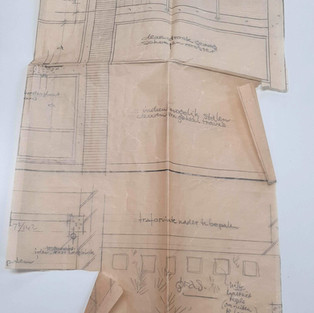Transparent Papers Workshop
- Fenna Engelke
- Sep 17, 2019
- 2 min read
Updated: Apr 2, 2021
This week was spent looking into transparent papers and the difficulties that come with conserving them. (Please note, this post has some general information about transparent papers and some conservation testing but I've now uploaded a longer post of a paper I wrote on transparent papers and their history and types so please see that post if that is what you are looking for.) Generally, transparent papers are found to be used in architectural drawings, design plans, used in office copying, and folders for photos. These papers can be calque, grease proof papers (also called papier cristal), impregnated papers, or sulfurised paper.
What makes papers transparent? Generally, opaque papers are made of short fibers. High thickness and high grammage cause papers to be opaque so papers which use thin fibers and low grammage tend to be more transparent.
Conserving transparent papers can be difficult as mends can easily be seen from the verso and solvents can render the paper opaque.
To become more familiar with the issues in conserving these papers, we were given four transparent paper samples and assigned to test various adhesives on the different papers.
The four samples included (top to bottom in the photo to the left): 1. Impregnated transparent paper (#1)
2. Impregnated transparent paper (#2)
3. Claque paper
4. Utoplex
The first three were found papers, while the forth was given to us by our professor.
Tears were made in the papers and each was mended with either kozo or gampi Japanese paper. Of the adhesives I was able to test before the end of the week, I tested: starch, 8% Methyl cellulose, and a 1% Gelatin. Of those, I found my ability to control the moisture was best while using the methyl cellulose but I also noted that I was having an easy time with the gelatin as well. The gelatin had a very short working time but by the time I started testing it, I was already 24 mends in and was becoming familiar with the material. Taking this into consideration, I wonder if I could revisit starch and be more successful with more practice.
Of the papers, I found that the impregnated papers were less reactive to the moisture in the adhesives and that the claque paper and the utoplex were more likely to deform after application of the tear mends.
Credit for the information on transparent papers goes to Bas van Velzen (UvA) and his presentations.








Comentarios